Hot racking (also known as hot bunking or hot bedding) is the sanctioned practice within military organizations of assigning more than one crew member to a bed or "rack" to reduce berthing (sleeping) space. [1]
Contents

Hot racking (also known as hot bunking or hot bedding) is the sanctioned practice within military organizations of assigning more than one crew member to a bed or "rack" to reduce berthing (sleeping) space. [1]

The practice dates back at least to the sixteenth century, and today is particularly applied aboard submarines, where maximization of space is especially important. Generally, the lowest ranking members of the crew are required to hot rack. Hot racking is sometimes used in jails and prisons to deal with overcrowding.[ citation needed ]
Depending upon the watch system, two, or even three people may end up sharing the same bunk. The term comes from the military slang use of the term "rack" for a bed or bunk. With more than one crew member assigned to a rack, it is possible that a crew member returning from a duty shift will lie down on a rack immediately after it is vacated by another crew member about to start a shift. The rack is therefore said to be "hot", that is, still warm from the vacating crew member's body heat.[ citation needed ]
Colonel is a senior military officer rank used in many countries. It is also used in some police forces and paramilitary organizations.
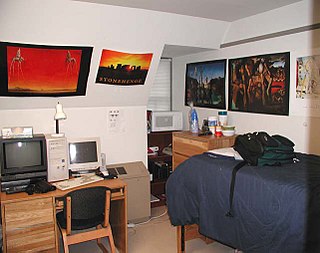
A dormitory is a building primarily providing sleeping and residential quarters for large numbers of people such as boarding school, high school, college or university students. In some countries, it can also refer to a room containing several beds accommodating people.

Scott Jay "Doc" Horowitz is a retired American astronaut and a veteran of four Space Shuttle missions.

A bedroom or bedchamber is a room situated within a residential or accommodation unit characterised by its usage for sleeping and sexual activity. A typical western bedroom contains as bedroom furniture one or two beds, a clothes closet, and bedside table and dressing table, both of which usually contain drawers. Except in bungalows, ranch style homes, ground floor apartments, or one-storey motels, bedrooms are usually on one of the floors of a dwelling that is above ground level.
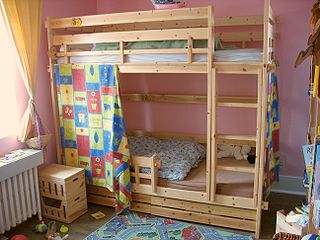
A bunk bed is a type of bed in which one bed frame is stacked on top of another, allowing two or more beds to occupy the floor space usually required by just one. They are commonly seen on ships, in the military, and in hostels, dormitories, summer camps, children’s bedrooms, and prisons.
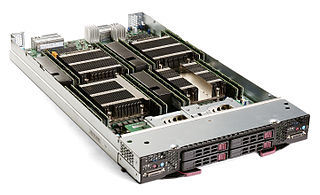
A blade server is a stripped-down server computer with a modular design optimized to minimize the use of physical space and energy. Blade servers have many components removed to save space, minimize power consumption and other considerations, while still having all the functional components to be considered a computer. Unlike a rack-mount server, a blade server fits inside a blade enclosure, which can hold multiple blade servers, providing services such as power, cooling, networking, various interconnects and management. Together, blades and the blade enclosure form a blade system, which may itself be rack-mounted. Different blade providers have differing principles regarding what to include in the blade itself, and in the blade system as a whole.

A bed is an item of furniture that is used as a place to sleep, rest, and relax.

In United States railroad terminology, a troop sleeper was a railroad passenger car which had been constructed to serve as something of a mobile barracks for transporting troops over distances sufficient to require overnight accommodations. This method allowed part of the trip to be made overnight, reducing the amount of transit time required and increasing travel efficiency.
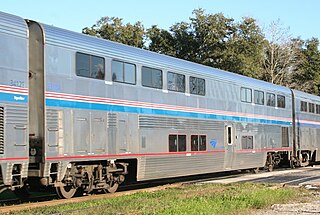
A passenger railroad car or passenger car, also called a passenger carriage, passenger coach, or passenger bogie is a railroad car that is designed to carry passengers. The term passenger car can also be associated with a sleeping car, a baggage car, a dining car, railway post office and prisoner transport cars.

A loadmaster is an aircrew member on civilian aircraft or military transport aircraft tasked with the safe loading, transport and unloading of aerial cargoes. Loadmasters serve in the militaries and civilian airlines of many nations.
Hot desking is an office organization system that involves multiple workers using a single physical work station or surface during different time periods. The "desk" in the name refers to a table or other work space being shared by multiple workers on different shifts as opposed to every staff member having their own personal desk. A primary motivation for hot-desking is cost reduction through space savings—up to 30% in some cases. Hot desking is especially valuable in cities where real estate prices are high.

A prison cell is a small room in a prison or police station where a prisoner is held. Cells greatly vary by their furnishings, hygienic services, and cleanliness, both across countries and based on the level of punishment to which the person being held has been sentenced. Cells can be occupied by one or multiple people depending on factors that include, but are not limited to, inmate population, facility size, resources, or inmate behavior.

A hardpoint is an attachment location on a structural frame designed to transfer force and carry an external or internal load. The term is usually used to refer to the mounting points on the airframe of military aircraft that carry weapons, ordnances and support equipments, and also include hardpoints on the wings or fuselage of a military transport aircraft, commercial airliner or private jet where external turbofan jet engines are often mounted.
Hoteling is a method of office management in which workers dynamically schedule their use of workspaces such as desks, cubicles, and offices. It is an alternative approach to the more traditional method of permanently assigned seating. Hoteling is reservation-based unassigned seating; employees reserve a workspace before they come to work in an office. An alternate method of handling unassigned seating is hot desking, which does not involve reservations; with hot-desking, a worker chooses a workspace upon arrival, rather than reserving it in advance. The use of the term has declined in recent years.
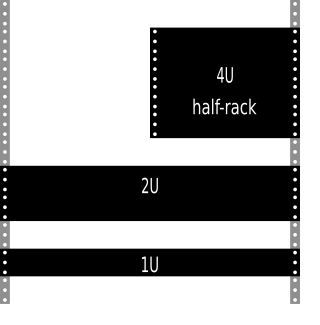
A rack unit is a unit of measure defined as 1+3⁄4 inches (44.45 mm). It is most frequently used as a measurement of the overall height of 19-inch and 23-inch rack frames, as well as the height of equipment that mounts in these frames, whereby the height of the frame or equipment is expressed as multiples of rack units. For example, a typical full-size rack cage is 42U high, while equipment is typically 1U, 2U, 3U, or 4U high.
A twinette is a sleeping-berth compartment for two persons in a train. The term "twinette" is in common use only in Australia and New Zealand ; thus the double-berth compartments described here are those found in trains in Australia or New Zealand.

A roomette is a type of sleeping car compartment in a railroad passenger train. The term was first used in North America, and was later carried over into Australia and New Zealand. Roomette rooms are relatively small, and were originally generally intended for use by a single person; contemporary roomettes on Amtrak, however, include two sleeping berths.

A berth is a bed or sleeping accommodation on vehicles. Space accommodations have contributed to certain common design elements of berths.

The TÜVASAŞ 2000, more commonly known as TVS2000, is a series of intercity railcars built by TÜVASAŞ for the Turkish State Railways between 1993 and 2005. They were built in order to revive TCDD's failing image in the early 1990s, for use on the Capital Express. Today they are the most common railcars in Turkey.
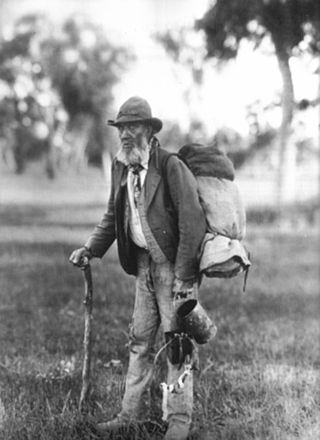
The cowboy bedroll was an American Old West precursor to the modern sleeping bag, which carried a man's bed and some personal belongings in a waterproof shell. In Australia, it was called a swag.